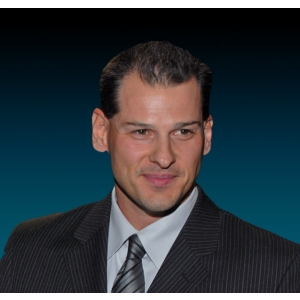Advertisement
Fitness goals should be based on what impact you want exercise to have on your life and how you want to incorporate exercise into your life. What do you want to do and where do you want to be tomorrow, the next day, next week or next year? How much time are you willing to devote to your exercise plan? How much money are you willing to invest in exercise equipment or activities? These questions can help you understand the level of commitment you are willing to invest in your exercise goals. Once you gain clarity on your internal reasons and desires to exercise, it becomes easier to narrow down your exercise goals.
Use the following goal-setting process, called SCAMPI, to not only help you decide what your fitness goals should be, but also increase your ability to stick to your program. SCAMPI stands for:
S: Specific
Set specific goals. This will result in much better performance than setting easy goals, no goals, or just saying that you want to lose weight. An example of a specific goal is “I want to lose 20 lbs in 12 weeks so that I can look and feel great while I’m on vacation with my family.”
C: Challenging
Set challenging, yet realistic goals. 20 pounds of weight loss in 12 weeks, while challenging is realistic; whereas 36 pounds in 12 weeks, while definitely challenging is not the most realistic outcome.
A: Approach
Set your goal with a positive mindset as opposed to a negative one. For example, losing weight because you will feel better about yourself and therefore be a better spouse/parent for your family when on vacation, and not because you hate the way you look.
M: Measurable
Keep track of your progress. If the goal is weight loss, be sure to track the important aspects of your weight loss along the way, such as logging your food intake and weighing weekly, to determine how you are progressing to your goal.
P: Proximal
Break down your bigger goal into smaller more manageable goals. Keeping with the goal of losing 20 pounds in 12 weeks, break that down into how much you need to lose each month, week, day, etc. Accomplishing the smaller goals as you work your way up to the larger goal will keep you motivated for your entire program.
I: Inspirational
Lastly, keep your goal(s) aligned with your own personal ideals and ambitions, doing the goal for yourself, and not others.
S: Specific
Set specific goals. This will result in much better performance than setting easy goals, no goals, or just saying that you want to lose weight. An example of a specific goal is “I want to lose 20 lbs in 12 weeks so that I can look and feel great while I’m on vacation with my family.”
C: Challenging
Set challenging, yet realistic goals. 20 pounds of weight loss in 12 weeks, while challenging is realistic; whereas 36 pounds in 12 weeks, while definitely challenging is not the most realistic outcome.
A: Approach
Set your goal with a positive mindset as opposed to a negative one. For example, losing weight because you will feel better about yourself and therefore be a better spouse/parent for your family when on vacation, and not because you hate the way you look.
M: Measurable
Keep track of your progress. If the goal is weight loss, be sure to track the important aspects of your weight loss along the way, such as logging your food intake and weighing weekly, to determine how you are progressing to your goal.
P: Proximal
Break down your bigger goal into smaller more manageable goals. Keeping with the goal of losing 20 pounds in 12 weeks, break that down into how much you need to lose each month, week, day, etc. Accomplishing the smaller goals as you work your way up to the larger goal will keep you motivated for your entire program.
I: Inspirational
Lastly, keep your goal(s) aligned with your own personal ideals and ambitions, doing the goal for yourself, and not others.
Continue Learning about Fitness Goals
Important: This content reflects information from various individuals and organizations and may offer alternative or opposing points of view. It should not be used for medical advice, diagnosis or treatment. As always, you should consult with your healthcare provider about your specific health needs.

